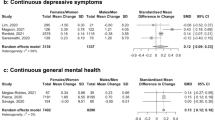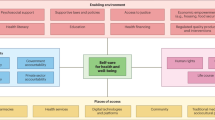Abstract
Men have shorter life expectancy and higher mortality than women; however, only a few countries have dedicated men's health policies. Men's health reports can support the development of men's health policies. The 2013 Asian Men's Health Report (AMHR) systematically documents and compares the status of men's health across countries in Asia. The AMHR can be used as an exemplar to guide future men's health reports. The main challenges during creation of the AMHR were the lack of comprehensive health databases and the variety of data quality between countries. The AMHR revealed variations in mortality and morbidity across diseases, regions, and income groups, prompting a Delphi survey among men's health stakeholders to determine whether any dedicated men's health policies in Asia existed and to reach a consensus on the recommendations of men's health policies. The AMHR helped to promote men's health in Asia and across the world, generated research questions and collaborations, provided evidence to support development of men's health policies, identified the need to improve existing health databases, and developed a framework for the creation of other men's health reports.
This is a preview of subscription content, access via your institution
Access options
Access Nature and 54 other Nature Portfolio journals
Get Nature+, our best-value online-access subscription
$29.99 / 30 days
cancel any time
Subscribe to this journal
Receive 12 print issues and online access
$209.00 per year
only $17.42 per issue
Buy this article
- Purchase on Springer Link
- Instant access to full article PDF
Prices may be subject to local taxes which are calculated during checkout



Similar content being viewed by others
References
Barford, A., Dorling, D., Davey Smith, G. & Shaw, M. Life expectancy: women now on top everywhere. BMJ 332, 808 (2006).
Salzman, B. E. & Wender, R. C. Male sex: a major health disparity. Prim. Care 33, 1–16 (2006).
Wang, H., Schumacher, A. E., Levitz, C. E., Mokdad, A. H. & Murray, C. J. Left behind: widening disparities for males and females in US county life expectancy, 1985–2010. Popul. Health Metr. 11, 8 (2013).
Ng, C. J., Teo, C. H., Ho, C. C., Tan, W. P. & Tan, H. M. The status of men's health in Asia. Prev. Med. 67, 295–302 (2014).
White, A. et al. An examination of the association between premature mortality and life expectancy among men in Europe. Eur. J. Public Health 24, 673–679 (2014).
White, A. et al. Men's health in Europe. J. Mens Health 8, 192–201 (2011).
Bilsker, D., Goldenberg, L. & Davison, J. A roadmap to men's health: current status, research, policy & practice. Simon Fraser University https://www.sfu.ca/content/dam/sfu/carmha/resources/mens-health/A-Roadmap-to-Mens-Health.pdf (2010).
Elterman, D. S., Kaplan, S. A., Pelman, R. S. & Goldenberg, S. L. How 'male health' fits into the field of urology. Nat. Rev. Urol. 10, 606–612 (2013).
Baker, P. et al. The men's health gap: men must be included in the global health equity agenda. Bull. World Health Organ. 92, 618–620 (2014).
Australian Government Department of Health and Ageing. National male health policy: building on the strengths of Australian males. Health.gov.au https://www.health.gov.au/internet/main/publishing.nsf/Content/7935AC78159969D4CA257BF0001C6B07/$File/MainDocument.pdf (2010).
Department of Health and Children. National men's health policy 2008–2013. Men's Health Forum in Ireland http://www.mhfi.org/menshealthpolicy.pdf (2008).
Ministry of Health. National policy of integral attention to men's health (PNAISH) [Portuguese]. PortalArquivos http://portalarquivos.saude.gov.br/images/pdf/2014/maio/21/CNSH-DOC-PNAISH---Principios-e-Diretrizes.pdf (2009).
Baker, P. Review of the national men's health policy and action plan 2008–2013. Final report for the health service executive. Men's Health Forum in Ireland http://www.mhfi.org/policyreview2015.pdf (2015).
Peter, B. Worth the paper they're written on? The potential role of national men's health policies. Eurohealth 21, 27–29 (2015).
Tan, H. M., Ng, C. J., Hom, C. C. K. & Teo, C. H. Asian men's health report. Malaysian Men's Health Initiative http://menshealthmalaysia.org/wp-content/uploads/2016/03/Asian_Mens_Health_Report.pdf (2013).
European Commission. The state of men's health in Europe: extended report. European Commission http://ec.europa.eu/health/population_groups/docs/men_health_extended_en.pdf (2013).
Men's Health Forum in Ireland. Men's health in Ireland. Men's Health Forum in Ireland http://www.mhfi.org/fullreport.pdf (2004).
Danish National Board of Health. A health status of men in Denmark and a review of effective interventions for promoting men's health Copenhagen. Danish National Board of Health http://sundhedsstyrelsen.dk/∼/media/DBB49B5299F54674AFB3D737CF623691.ashx (2011).
Foundation for Men's Health. First German men's health report — condensed version. Foundation for Men's Health http://www.stiftung-maennergesundheit.de/fileadmin/maennergesundheit/media/content_pix/Startseite/MGB-Kurzfassungsbrosch%C3%BCre_englisch_FINAL.pdf (2011).
Australian Institute of Health and Welfare. The health of Australia's males. AIHW http://www.aihw.gov.au/WorkArea/DownloadAsset.aspx?id=10737419201 (2011).
White, A. & Cash, K. A Report on the State of Men's Health Across 17 European Countries (The European Men's Health Forum, 2003).
Australian Institute of Health and Welfare. The health of Australia's males: 25 years and over. AIHW http://www.aihw.gov.au/WorkArea/DownloadAsset.aspx?id=60129543989 (2013).
Australian Institute of Health and Welfare. The health of Australia's males: from birth to young adulthood (0–24 years). AIHW http://www.aihw.gov.au/WorkArea/DownloadAsset.aspx?id=60129543996 (2013).
White, A., Seims, A. & Newton, R. The state of men's health in Leeds: a summary. Leeds Beckett University https://www.leedsbeckett.ac.uk/-/media/files/mens-health/160525_11217_stateofmenshealth_researchreport2_web.pdf?la=en (2016).
Robert Koch Institut. Gesundheitliche Lage der Männer in Deutschland [German]. Robert Koch Institut http://edoc.rki.de/documents/rki_fv/retiNCCKWE1D/PDF/25aJ8cibVGnqM.pdf (2014).
United Nations ESCAP. ESCAP statistical database. UNESCAP http://www.unescap.org/stat/data (2016).
World Health Organization. Global Health Observatory (GHO) data. WHO http://www.who.int/gho/en/ (2016).
Ferlay, J. S. I. et al. GLOBOCAN 2012: estimated cancer incidence and mortality worldwide in 2012. International Agency for Research on Cancer http://globocan.iarc.fr (2013).
Teo, C. H., Ng, C. J., Ho, C. C. & Tan, H. M. A consensus on men's health status and policy in Asia: a Delphi survey. Public Health 129, 60–67 (2015).
Teo, C. H. & Ng, C. J. Development and pilot testing of a national men's health index. BMC Health Serv. Res. 14, 1 (2014).
Institute for Health Metrics and Evaluation. Global burden of disease. IHME http://www.healthdata.org/gbd (2016).
Acknowledgements
We would like to thank Dr Wei Phin Tan for proofreading the manuscript.
Author information
Authors and Affiliations
Contributions
All authors researched data for, made substantial contribution to discussions of content, wrote the article and reviewed and edited the manuscript before submission.
Corresponding author
Ethics declarations
Competing interests
The authors declare no competing financial interests.
Rights and permissions
About this article
Cite this article
Ng, C., Teo, C., Ho, C. et al. Development of the Asian Men's Health Report: challenges and opportunities. Nat Rev Urol 14, 630–636 (2017). https://doi.org/10.1038/nrurol.2017.93
Published:
Issue Date:
DOI: https://doi.org/10.1038/nrurol.2017.93



